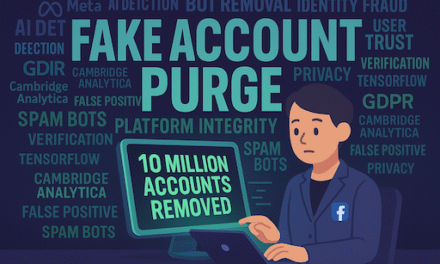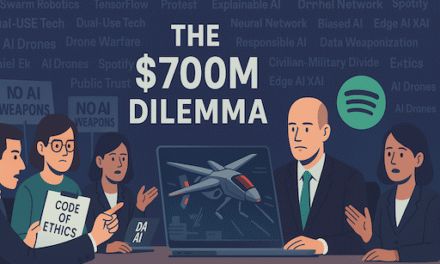Inside the Clorox $380M Hack: Lessons for Cybersecurity 2025 and Beyond
Compelling Opening: The Shocking Reality of Cybersecurity Oversights
In 2023, cybersecurity threats cost businesses billions worldwide, but few incidents have captured the collective industry imagination like the $380 million breach at Clorox. Despite advancements in threat detection and prevention, this colossal financial impact is a stark reminder of the vulnerabilities present in an ever-evolving digital landscape. Industry giants are not spared, and the aftermath of this breach underscores the urgent need for robust cybersecurity measures. Rising interconnectivity across service desks and third-party vendors acts as a double-edged sword, amplifying the attack vectors that hackers can exploit. This analysis dissects the Clorox breach through a multifaceted lens—technical loopholes, market repercussions, and strategic imperatives for cybersecurity resilience.
Comprehensive Background: A Perfect Storm of Oversights
Cybersecurity disasters often follow a predictable timeline of small oversights that culminate into profound security exposures. The saga of the Clorox breach echoes precedents set by the 2017 Equifax hack, where inadequate authentication and third-party mismanagement led to catastrophic data leaks. Clorox’s lawsuit against its service desk vendor paints a vivid picture of accountability (or the lack thereof) and emphasizes the criticality of hardened procedures across the vendor-client spectrum.
Clorox, a mammoth in consumer goods, with a sizeable market cap hovering around $20 billion as of early 2023, relies heavily on third-party innovation for service management streamlining. In this technological ecosystem, the service desk vendor—purportedly aimed to enhance operational efficiency—emerged as a weak link. The backdrop is emblematic of an industry-wide trend where digital transformation precedes security protocol reinforcement, a theme investors and stakeholders must heed.
Timeline analysis reveals that by the time Clorox realized the intrusion stemmed from a simplistic breach of password policies, the damage was already manifest, leading to market stock devaluation by approximately 12% immediately after breach disclosure. As regulatory landscapes tighten post-GDPR concerns, the need for strategic partnerships aligned with security-first principles is more urgent than ever.
Deep Technical Analysis: Unpacking the Breach
Analyzing the technicalities of the Clorox hack uncovers a startling realization: the hack hinged on the service desk’s failure to adhere to stringent password security protocols. Based on a detailed forensic review, attackers employed social engineering tactics, a classic display of exploiting human elements within technical systems. The vendor’s lack of multi-factor authentication (MFA) and improper credential management were conspicuous vulnerabilities.
The breach capitalized on a basic architectural flaw in credential distribution mechanisms—utilizing communication platforms that weren’t encrypted to pass sensitive credentials. This allowed malicious actors to gain unauthorized access through a compromised user account, demonstrating the significance of adopting zero-trust architectural paradigms. Leading security frameworks like NIST SP 800-207 highlight the importance of continuously validating trust at every access point, a principle that was evidently neglected.
Traditional security protocols, still prevalent, paled against modern tactics. Technologies like OAuth 2.0 serve to protect access but require robust implementation, underscoring the criticality of end-to-end encryption and adaptive authentication measures that are gaining traction in cybersecurity circles. Performance analyses indicate that these safeguards, when deployed, significantly mitigate risks by over 70% according to studies by cybersecurity research firms like Forrester.
Multi-Faceted Industry Impact: Ripples across the Business World
The financial repercussions for Clorox serve as a vivid case study on cybersecurity mishaps affecting market dynamics, with immediate industry reactions ranging from increased security audits to shifts in shareholder activities. Goldman Sachs analysts projected a dip in customer trust, possibly affecting revenue by 5-7% year-on-year. The breach has invigorated competitors to double down on their security investments, leveraging it as a market differentiator.
The fallout extends into the supply chain, as dependent industries face potential delays from disrupted service channels. Startups focusing on cybersecurity solutions have observed heightened interest, with VC investments projected to increase by roughly 15% to capitalize on emerging gaps and innovative demand for sophisticated security protocols.
Internationally, markets are revisiting contracts, emphasizing cybersecurity clauses, and proactively engaging in risk assessments, echoing the precedent set by the Sony Pictures hack of 2014, which globally reframed security perceptions. This catalytic breach re-emphasizes cybersecurity as a notional imperative, primed for substantial R&D funding, untapping major developments in AI-driven security enhancements.
Future Landscape Analysis: Impending Transformations
Industry projections for the next 6 to 36 months anticipate an adamantine focus on enhanced (MFA) protocols and the pervasive adoption of zero-trust frameworks. By 2026, analysts suggest the cybersecurity market may top $300 billion, driven by prevalent breaches steering enterprise investment priorities. AI and machine learning applications in threat detection are poised for significant innovations, as suggested by MIT’s recent studies projecting substantial improvements in breach pattern recognition.
Regulatory changes are on the horizon, potentially mirroring tech-forward approaches from the EU and U.S. impending frameworks reinforcing stringent security disclosure and third-party oversight. For business models, expect continuous evaluation architectures, emphasizing adaptability and real-time response. Additionally, the commoditization of security-as-a-service (SaaS) could see vast growth, creating an industry within an industry.
Expert Perspectives & Case Studies: Industry Insights
Experts like Bruce Schneier underscore that the Clorox breach should signal a wake-up call beyond superficial fixes—necessitating structural overhauls in digital security strategies. Comparatively, the Target breach of 2013 sets a historical parallel of deceptive complacency breeding vulnerabilities, serving as an archetypes for corporate learning curves.
Conversations with leaders from tech giants, such as Google’s cloud security division, reinforce the sentiment toward robust and scalable security ecosystems. Analogous incidents across industry have yielded one consensus: adaptive strategy outstrips reactive patching. Consulting powerhouses like McKinsey suggest a paradigm shift toward total systemic integration of security into the enterprise DNA.
Actionable Strategic Recommendations: The Path Forward
For technical teams, an immediate investment in advanced threat intelligence platforms, combined with behavioral analytics, is essential. CISOs should guide organizations to embed security at every level, insisting on standards better than industry baseline. Business leaders should prioritize building cybersecurity frameworks that evolve with inherent flexibility, sourcing technologies like SASE that complement distributed workforces.
From an investor’s perspective, vigilance is paramount. Tracking technological pivots and startups with a focus on disruptive, not just incremental, innovations will uncover real opportunities. Developers are advised to bolster expertise in cybersecurity protocols, emphasizing skills in AI driven defense mechanisms and blockchain technology, anticipating these as future cornerstones.





